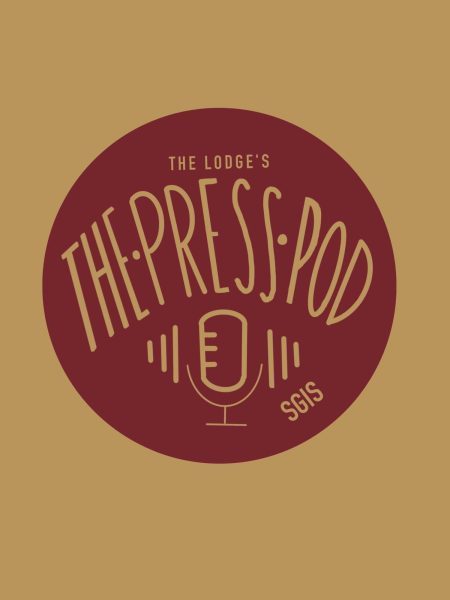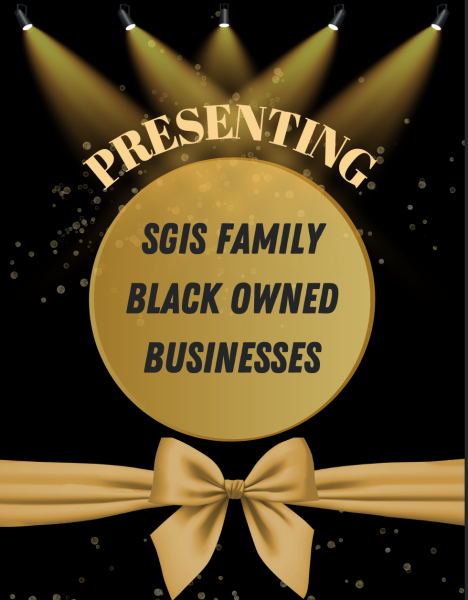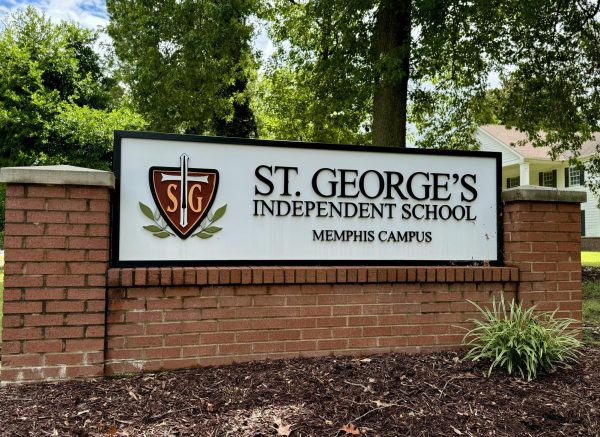Connecting the Community
How does St. George’s connect with your community?
St. George’s prides itself on having an inclusive community that welcomes all students and families regardless of “religious, racial, ethnic and socioeconomic” differences. At least, that’s what the St. George’s website says. But does St. George’s actually hold itself accountable to the level of inclusivity it advertises to the world?
Many students believe that St. George’s is making a valid effort on the topic of understanding different cultures. Sophomore Leinah Pathak, who identifies with certain aspects of Hinduism and Christianity, explained how the community strives for inclusivity.
“Nobody’s… against anything. And everybody’s just like, very friendly here towards… your ethnicity,” she said.
In addition, freshman Dev Dalsania, who identifies as Indian, feels included in the community when he talks about his culture’s different holidays and traditions.
“There [have been] no strong opinions against [my holidays] and everybody has always been supportive and curious about [them],” he said.

Sophomore Ayaan Aman, a follower of Islam, also reflected on how students not only respect but make an effort to learn about other cultures, and how the school tries to be inclusive.
“There’s not a lot of Muslims here, but when I’m here, I feel appreciated. I feel like [my religion] is not a factor [that] has really affected how I’m treated here…I feel like there’s been a lot of representation done with… Hispanic Heritage Month… and I feel like if they keep doing that, I think it’ll show enough inclusiveness,” he said.
Sophomore Ari Taub, a follower of Reform Judaism, appreciates how the school acknowledged him and other Jewish students when they “brought in a rabbi… in chapel.”
Junior Lily Anne McCollum agreed that the school is largely inclusive of Judaism.
“A lot of the time I feel like things [have been] thought about and taken into consideration… but other times I feel like not as much.”
McCollum is not alone in feeling like the school has room to grow, specifically concerning events from 2019.
2019 was an eventful year for St. George’s. According to an article from The Commercial Appeal, a former teacher endured racial slurs from students, and she was dissatisfied with the punishment, so she sued the school. Tensions were already high when a pastor came to chapel and gave a racially insensitive talk, which served as a catalyst for a conversation about inclusion in the school’s community.
To address these incidents, St. George’s held a “Day of Healing” in September of 2019. The school canceled classes for the day and had students participate in team-building activities, meditation and love-language identification.
Junior Elijah Palmer wished that the “Day of Healing” was more intentional with its efforts.
“With the chapel person… [a former teacher] had a whole day planned to learn about why [what he said] was wrong, why you should not think that way, and how you can improve,” he said.
But the school ended up taking a less direct route with the “Day of Healing” activities.
Sophomore Makenna Harper agreed with Palmer and called for the community to have those hard conversations.
“We shouldn’t beat around the bush,” she explained. “I just feel like if we… actually have a hard conversation or we see that [racism] is happening still to this day, not like 200 years ago… and how it’s modernized and everything, I feel like it’ll be way better for the community as a whole.”
Additionally, Palmer remarked on how many students at this school express opinions without regard for others.
“We have people sharing opinions as if they’re facts, [and] those opinions can be very harmful to a specific community.”
He continued, “a common way white people would try to associate or talk to me was through my race… They’re like…‘they’re Black, so they should know… about Black stuff.’”
He noted different stereotypes that other students would attempt to associate with him, such as loving Kool-Aid and watermelon as a Black man and knowing how to vogue as a gay man. Vogue is a dance move stereotypically associated with the LGBTQ+ community.

Mrs. Nikki Davis, the Upper School Director of Counseling and Guidance, said she has felt “singled out as someone that may have an agenda for the Black community just because [she’s] Black, so [she] think[s] there are a lot of assumptions sometimes.”
Mrs. Davis showed that she tries to keep up hope, though, adding, “I think it can be better. I will say, in general it is, and I’ve been here for eight years going on nine years so it’s definitely better to me than it has been.”
However, whether the school needs improvement or not, some think the school can only do so much in terms of diversity.
As a Latina, junior Sofia Delahoussaye believes that the efforts St. George’s has made to help connect with the Latino community are as good as they’re going to get.
She said, “It’s such a small percentage of the school that [I] don’t really feel like a larger need for representation is there.”
Regardless, when the school does more to represent her culture, she feels moved and compelled to share her perspective. She spoke about one instance from her AP English Language and Composition class.
“I almost cried in English class when we read this thing from Sonia Sotomayor,” she said, referring to a speech Sotomayor delivered to the University of California, Berkeley, School of Law titled “A Latina Judge’s Voice.”
This hit home for Delahoussaye. The lack of Puerto Rican representation she sees has become a norm. She said, “I guess it’s because Puerto Rico isn’t talked about more than a lot of other areas. But as a part of the United States, it’s very much ignored…. like the amount of times that I’ve heard things like, ‘Oh, that isn’t its own country?’”
McCollum and Delahoussaye think that inclusion in the St. George’s community is complicated. McCollum spoke on her Jewish identity, and specifically the complexity that comes with it.
“Within my minority group, it’s not like an outside appearance, like you don’t visibly see that I’m Jewish,” McCollum said. “ I look like everybody else but it’s something that is still a minority.”
She continued, “I feel like my minority is a little bit different than everybody else’s because it’s not something that you see or hear, it’s something you have to figure out.”
McCollum stated that people should be educated on different identities and not see differences as a negative thing.
“More education on minorities and different kinds of groups… [and] differences should mean that you want to be educated about people’s differences.” When it came to religion, Delahoussaye, who identifies as Catholic, felt that St. George’s has hit the mark.
“I think they do a really good job of doing the sort of, ‘we’re Episcopal, but all people are welcome’ sort of thing.”
Pathak feels indifferent to the topic of religion. Still, she had a much stronger stance when asked about her hesitancy to share her beliefs.
“Sometimes, like when we’re talking about Christianity in classes, I’m tuning out because I’m not very familiar with that. But I’m not familiar with [Hinduism] either. So I like listening.”

The school has been put in a difficult position. On one hand, students struggle to connect with any kind of diversity training the school has tried to implement.
“They’re taking steps to try to feel, or to try to make minorities feel included, but it kind of feels performative, in a way,” said Harper. “I feel like it doesn’t necessarily work because kids already don’t want to go to those things… they’re just like, ‘Ugh, I have to sit here and listen to this.’”
On the other hand, students are also opposed to a more student-driven approach.
Freshman Gabrielle Booth said, “I think that [the school] wants things to be so student-driven that they [are] kind of just like… hands off.”
She added, “I think a lot of [students] would be very hesitant to do [anything] though because I think they’re very worried about what other kids would think about them.”
With the increasing polarization of the world and the ever growing division of our country, having difficult conversations becomes essential to the school’s sense of community, regardless of if they are driven by students or led by the school.
Mr. Timothy Gibson, Head of School, emphasized both the importance and tricky nature of establishing these types of discourse.
“There has to be an opportunity for us to, in society, to move beyond polite conversation without stopping being polite so we can actually have honest conversations. But… [what] we tend to [see] in a lot of spaces is it’s now about the loudest voice wins, and that’s exhausting because no one’s listening if everybody’s screaming.”
Still, Mr. Gibson endorses the benefits of hard conversations.
“What I like about life is the spaces where you can find common ground. You can’t find common ground with everyone, but you can find kindness with most people if you try.”





